Have you always wanted to build your own grill, but feel like you have two left hands? Fear not, chef and cookbook author James Whetlor wrote the DIY BBQ Cookbook without any DIY skills to speak of. We chat with him about the appeal of building your own barbecue and the allure of outdoor cooking.
AMEX ESSENTIALS: Tell us a little about yourself and what you do.
JAMES WHETLOR: I worked as a professional chef for 12 years, and as I got older and my feet and back started to hurt, I went looking for something other than cooking. That’s what led me to start Cabrito, a sustainable goat meat business. And because I was doing events and demos, I was doing a lot of outdoor cooking. That’s also how I got into writing cookbooks, such as Cooking on the Big Green Egg and Goat.
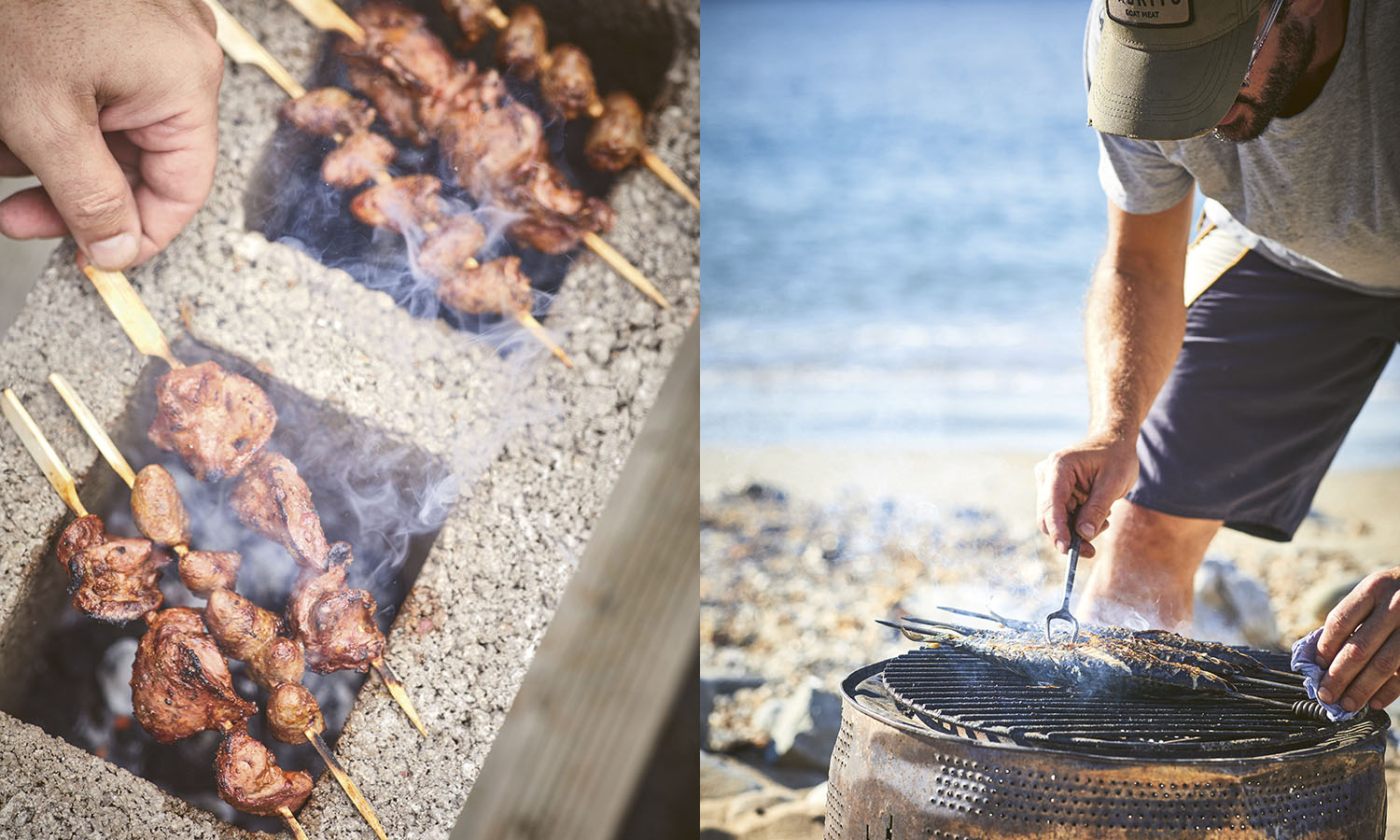
What inspired you to write this book?
I live on the coast, in the southwest of the UK. For my daughter’s sixth birthday, we organised a party on the beach. As brilliant as Big Green Eggs [a brand of ceramic kamado-style charcoal grills] are, they’re not particularly portable, and you have to wait for them to cool down after cooking. I had this washing machine drum that I had removed from the inside of a broken washing machine, and decided to carry that down to the beach and cook on that. It was so successful that it made me wonder what else I can knock together as a barbecue, rather than using all this elaborate, expensive equipment.
I’m very lucky to own a couple of Big Green Eggs and other barbecue equipment: they are all brilliant, but they’re also generic. What The DIY Barbecue Book allows you to do is build a barbecue that is personal to you, but also fits the space you have. You might have an awkward corner of the garden or patio where you can’t quite get anything to fit, so you can build your own.
Also, barbecue is very trendy at the moment, but not everybody wants to spend a lot of money in order to get into barbecue – some of those kits are quite expensive. This book gives you the chance to go to your local hardware store, buy five or six cinder blocks and some chicken wire, and build yourself a little barbecue. If you enjoy the experience, you can perhaps invest in more expensive equipment later.
Besides, I will be deliriously happy if this book has any impact on the decline in sales of disposable barbecues with their awful chemical charcoal. They have the habit of burning rubbish bins to the ground, or people leave them on the beach and they get stepped on. They’re an absolute menace.
You write that you have the DIY equivalent of a dancer’s two left feet, but want to encourage people to start building their own BBQs. What is the draw, for you, in creating your own BBQ when there are so many great models on the market?
I’m living proof that you don’t need any DIY skills. Everything in this book is incredibly simple to do. The tandoor, for instance, is essentially three large flower pots stacked together with sand. There is one solid cemented brick-built BBQ in the book, which would be great for a backyard patio. I put it in because some people would want to do a project requiring some work.
Obviously, when you’re moving breeze blocks around, you need solid shoes, gloves and eye protection. And some projects require an angle grinder. But other than that, everything else is just following a very simple set of instructions, which I wrote as a recipe with the ‘ingredients’ at the top, followed by a method.
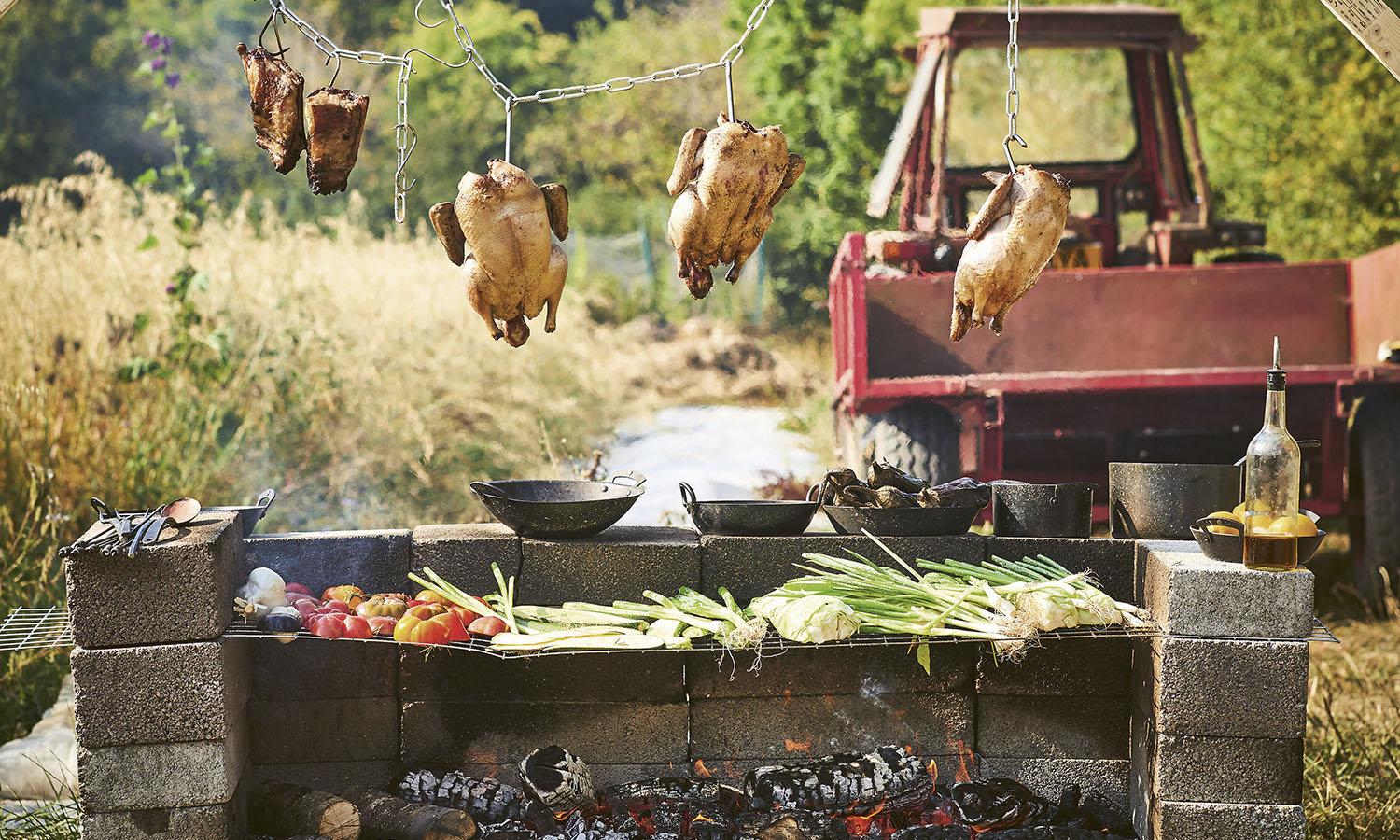
The book includes 10 BBQ builds, from an oil drum BBQ to a tandoor – do you recommend any specific one as a first-time project?
Everybody in their life will have a washing machine that breaks down. Well, it’s not all doom and gloom, because inside that washing machine is a barbecue waiting to come out. The drum is my favourite: it’s light, portable and cools down quickly. You just need around 20 minutes for it to cool down, and then you can carry it back to your car.
The other build I really enjoyed is the open-faced grill made of breeze blocks and chicken wire. They’re easy to do, and you can make them as large as you like. One of the things about grilling is moving the food away from the hot bits, and this barbecue gives you so much cooking space.
As a chef, what attracts you to BBQ techniques such as grilling and smoking?
As a professional chef, I’ve used a lot of gas and ovens – that’s very consistent heat. Barbecue, especially an open-fire barbecue, is much more involved. You’re constantly poking the food and fiddling around with it.
I’m always drawn back to this Michael Pollan quote: “No one ever comes and gathers around a microwave.” Whereas if you light a fire, put a grill on it and something to eat on top, within moments, you’ll be surrounded by people. There’s a conviviality in barbecue. And on top of that, there’s obviously the more technical side: chicken thighs cooked in an oven will taste fine. But if you cook them outside on a barbecue, you end up with a texture and a flavour that is so different: you’ll get a bit of flame lick and caramelisation and some crunch in the skin.
There are about 50 recipes in the book, inspired by cuisines from all over the world. Is there any specific flavour profile you’re drawn to?
In my opinion, the marriage between Indian food and barbecue is as close to perfection as you can get. Indian food is really complex in and of itself, there’s a layering of flavours with the spices, acidity, sweetness and fresh herbs. If you add the smoke and the texture you get from barbecuing, I think it’s just the best.
View this post on Instagram
View this post on Instagram
You’re encouraging your readers to start making their own bread on the BBQ or tandoor oven instead of using store-bought. What are some things to keep in mind when trying to make bread on a BBQ?
The bread you make on the barbecue are basically flatbreads, and they’re great for mopping up all the bits on your plate. I recommend making the dough beforehand, then cook everything else on the barbecue, and while your meat is resting, cook the breads because they will take no time at all.
I love making naans, as the dough is quite elastic and forgiving. You can use the tandoor, but it will just as easily work on the grill. Once you make that teardrop shape and drop the dough onto the grill, it will stiffen up really quickly, and then you can just use a pair of tongs to flip it over. I also love making parathas with their crisp, fatty texture. They’re fun to make with kids, too.
What is one favourite go-to dish that you always cook at every barbecue?
I always cook some goat, because people will be disappointed if I don’t. I’ll take a whole or a half shoulder of marinated goat, slow-smoke it and make pulled goat tacos. People usually respond by saying they never knew goat meat could taste like that.
Aubergines are the best vegetables to cook on the barbecue. I have a recipe for miso-marinated aubergine steaks in the book: you slice them thickly and essentially cook them like a steak. You can also cook them straight on the coals until the flesh is soft inside. With a bit of yoghurt, it’s essentially a baba ganoush. I also like to do a verdura mista, a mix of grilled vegetables dressed with basil, lemon zest, balsamic vinegar and olive oil. One of the things to keep in mind is to cut your vegetables in long batons, so they’re much easier to handle on the barbecue.
In the book, I describe cooking seasoned fish or meat on top of fire bricks in a hole in the ground. You close the hole and come back after a couple of hours. You’ll end up with perfectly cooked meat or fish, because all of the juices remain trapped inside. I think barbecue culture is moving toward more complicated equipment to become more and more refined. But that isn’t what barbecue is to me – for me, it’s the most fundamental way of cooking. High-end barbecues are brilliant at being precise and efficient, but you can’t carry them to the beach.
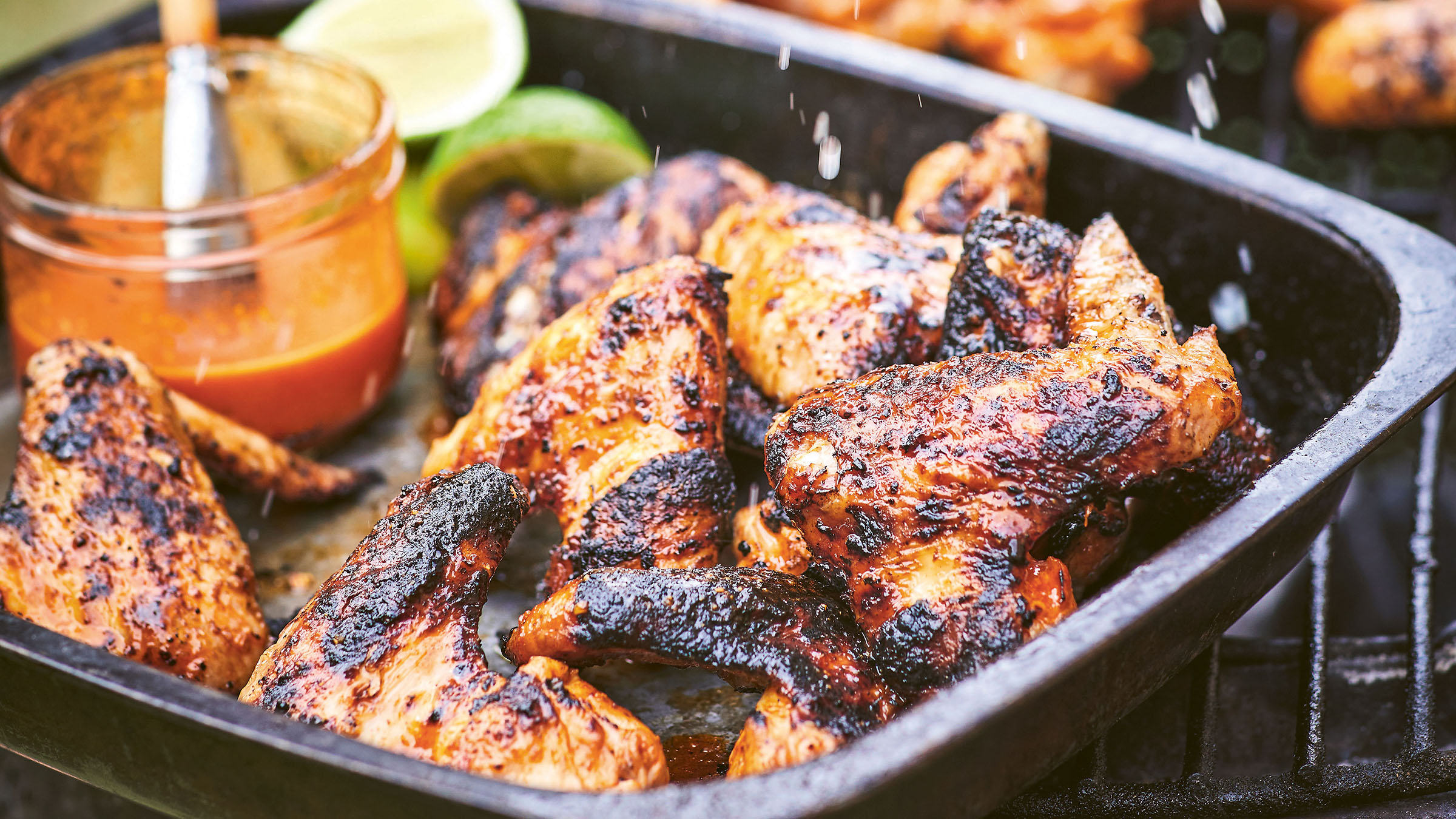
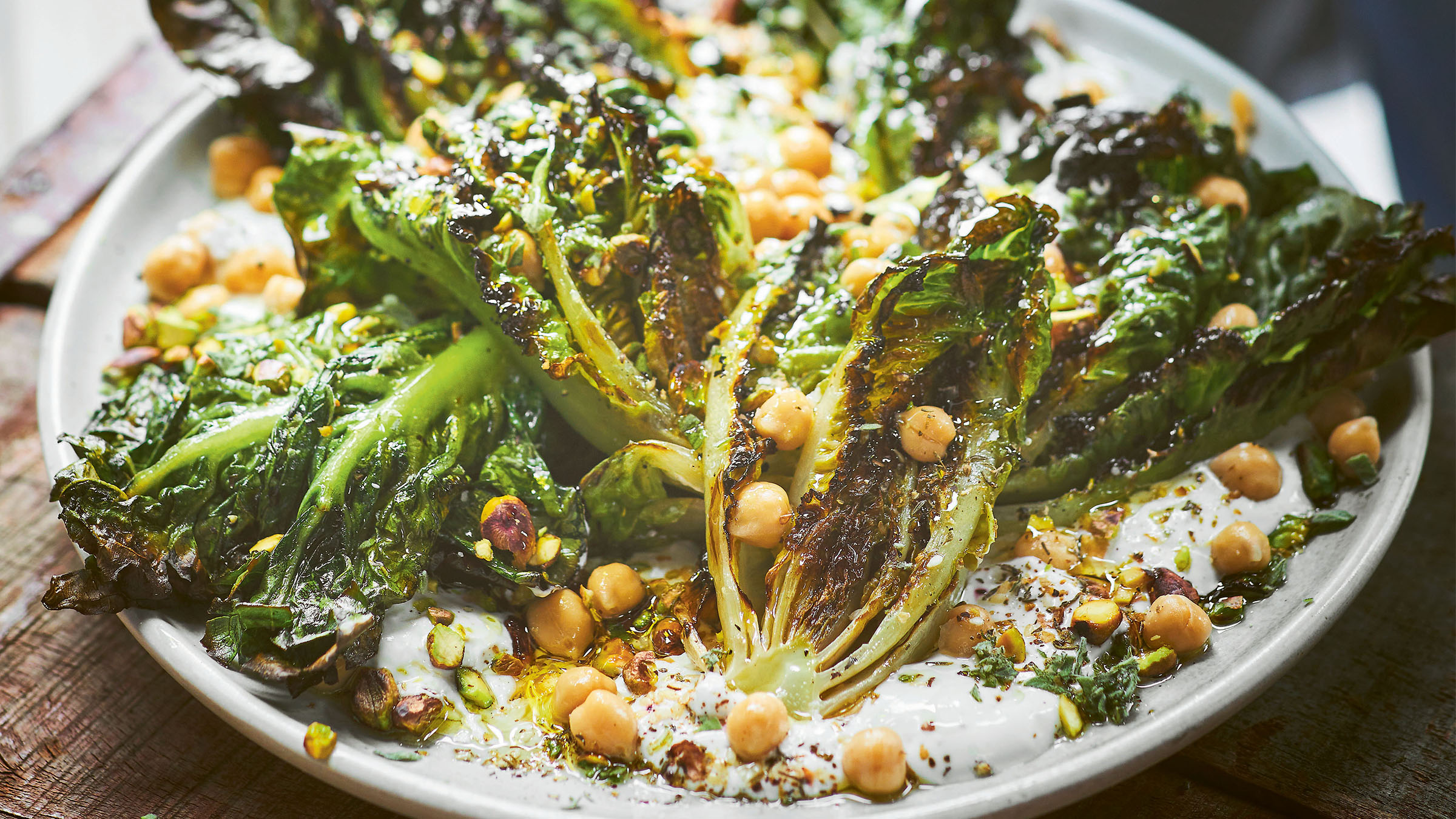
Check out James Whetlor’s recipes for BBQ coconut hot wings and grilled little gem lettuce with za’atar, pistachio and garlic yoghurt.
The DIY BBQ Cookbook; How to Build You Own BBQ and Cook up a Feast by James Whetlor (Quadrille, £20), 2023, Photography by Sam Folan

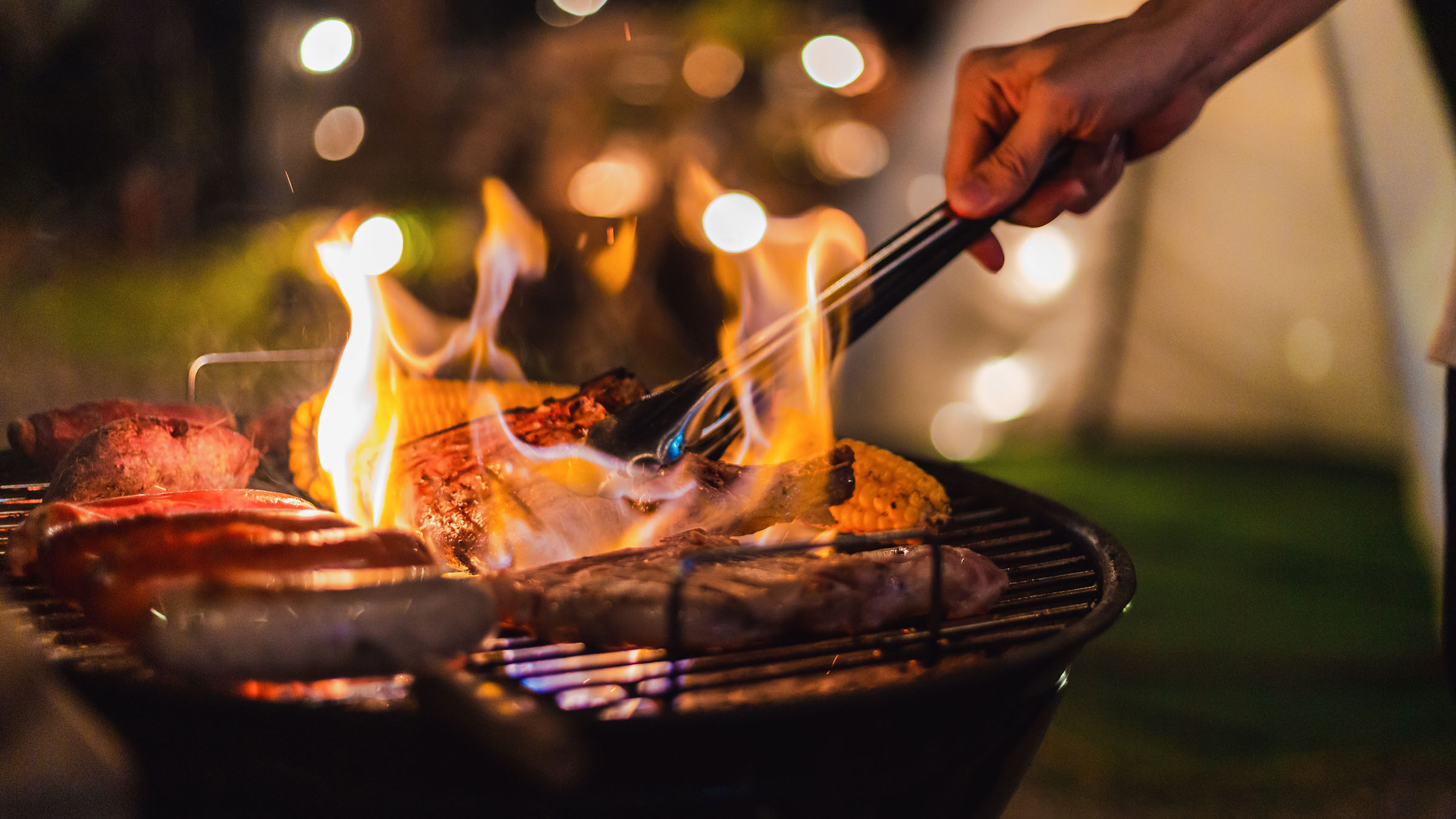












Sorry, the comment form is closed at this time.